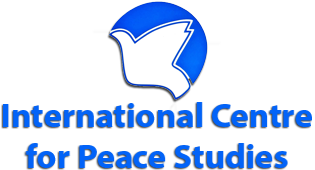One of the most significant outcomes for India from the recently held G20 Summit in New Delhi in September 2023 is the announcement of an ambitious global economic corridor connecting South Asia to Europe. This milestone was achieved along with the successful issuance of a Joint Communique. In a co-chaired session on 9 September 2023 with President Joe Biden of the United States, India’s Prime Minister Narendra Modi announced that “an important and historic agreement” has been signed to establish a transcontinental commercial corridor, India-Middle East-Europe Economic Corridor (IMEC), linking India with Europe through the Middle East.
Prime Minister Modi underscored that this corridor will drive economic integration and interdependence between these regions while providing “a sustainable direction for global connectivity and development”. This is seen as one of the biggest challenges yet to rival the Belt and Road Initiative (BRI), China’s envisioned alternative global economic architecture to the prevailing one dominated by the Western countries, led by by the United States. The presence of Washington as a key sponsor of the IMEC reflects its direct geopolitical contours.

With the United States, India, Saudi Arabia, the United Arab Emirates, France, Germany, Italy and the European Union as the project partners, the MOU stressed that this economic corridor would usher in “a transformative integration of Asia, Europe and the Middle East” by driving economic development “through enhanced connectivity and economic integration across two continents, thus unlocking sustainable and inclusive economic growth.”
The proposed IMEC route will consist of two separate corridors. The one entirely in Asia, connecting India with the Gulf countries of the Middle East, will be the Eastern Corridor, while the one connecting the Middle East with Europe will act as its Northern Corridor. “It will include a railway that, upon completion, will provide a reliable and cost-effective cross-border ship-to-rail transit network to supplement existing maritime and road transport routes – enabling goods and services to transit to, from, and between India, the UAE, Saudi Arabia, Jordan, Israel, and Europe,” the MOU states.
What is significant in this envisioned commercial corridor is its ambitious set of goals, including establishing a cross-border ship-to-rail transit network to facilitate trade between India and Europe through the Middle East, alongside laying cables for electricity and digital connectivity and pipelines for clean hydrogen export. The MOU gives IMEC a broad mandate of strengthening regional supply chains, enhancing trade access, streamlining trade processes, and promoting a greater focus on environmental, social, and governmental aspects. In terms of economic viability, reports claim that this corridor, once operational, will help reduce the time and cost of transportation of products from Europe and India by 40 per cent and 30 per cent respectively, which is very significant.
The announcement has been received with much optimism, with many experts describing the MOU as a ‘thing for the future’ and a potential economic ‘game-changer’. US President Joe Biden, in his chair remarks, described the IMEC as “far from just laying tracks” and a “game-changing regional investment” for “creating jobs, increasing trade, strengthening the supply chains, boosting connectivity, laying foundations that will strengthen commerce and food security for people across multiple countries.” A White House brief on 9 September 2023 described the IMEC commercial route as a “landmark” and “a gateway to our future…shared vision of an open, secure, and prosperous future” while affirming its commitment “to build out this corridor together with our partners.”
Saudi Arabia’s Crown Prince and Prime Minister Mohammad bin Salman (MBS) asserted that the MOU was founded on the “collaborative efforts” of its partners and underscored that this transcontinental corridor would benefit “our countries’ common interests by increasing economic interdependence…and the global economy in general.” The European Union President Von der Leyen emphasised that this corridor will provide the “most direct connection to date between India, the Arabian Gulf and Europe”, which will make trade exchange between India and Europe by cutting 40 per cent of the transportation time through its rail network.
Many have viewed this as a direct rival to China’s Belt and Road Initiative (BRI), which set out to build an alternative economic architecture for global trade with Beijing at its centre. The geopolitics related to BRI has often pitted China against multiple countries, which have accused it of building an enterprise of economic exploitation to siphon off the resources of poorer countries to sustain its manufacturing sector. It is notable to mention here that BRI has, of late, run into complications and that initial optimism has fizzled out, with its first European participant country, Italy, having revealed its intention to exit from the project soon. Interestingly, it was reported that China’s Premier Li Qiang made an unsuccessful attempt to persuade his Italian counterpart, Giorgia Meloni, to reconsider Rome’s decision to withdraw from the BRI on the sidelines of the New Delhi G20 summit.
As far as Beijing’s official reaction to the IMEC is concerned, its Foreign Ministry stated that China welcomed any developmental initiative to build and refurbish the infrastructure across the developing world. It, however, cautioned against turning these developmental initiatives into geopolitical tools against other countries. “China welcomes all initiatives that truly help developing countries build infrastructure and sincere efforts to promote connectivity and common development…… At the same time, we advocate that various connectivity initiatives should be open, inclusive, and form synergy, and should not become geopolitical tools,” China’s Foreign Ministry in a written response to India’s PTI news agency. However, Global Times, which reflects the Chinese Communist Party’s standing on issues, asserted that this project had apparent ‘geopolitical underpinnings’ despite the claims to the contrary by IMEC proponents as a means of economic integration. “The US is trying to squeeze China’s influence out of the Middle East and relevant regions by building large economic corridors as a counterweight to the BRI,” a Global Times editorial said.
For India, with its successful hosting of G20 signalled its arrival as a confident consensus-building actor capable of bringing together a largely divided international community. Therefore, the IMEC is expected to strengthen its reach to consolidate the rich Gulf market while providing an alternative route to Europe and beyond. In geopolitical terms, India’s prominent role in spearheading this project signifies its growing assertiveness in challenging China, with which its relations have been strained for the last few years. Notably, the two nations have been entangled in a border standoff, further exacerbated by India’s critical stance on BRI. India has maintained a deliberate distance from the BRI, citing concerns over its alignment through Gilgit Baltistan, a region that is a legitimate part of Jammu and Kashmir and is now under Pakistan’s illegal control, a move that New Delhi has openly opposed.
From an economic perspective, India envisions itself at the centre of the global economy in the coming years, and this transcontinental connectivity project could help realise that goal. This corridor is yet another connectivity project India is co-spearheading in the west apart from the International North–South Transport Corridor (INSTC) through Iran. For obvious reasons, Iran is not part of this corridor and India appears eager to join multiple corridors connecting it to Europe and Eurasia other than BRI. India is making significant strides in expanding the scale of its economy, with a particular focus on boosting its manufacturing sector and such connectivity will only enhance its reach and economic standing.
What truly sets India apart is its pivotal role in generating green energy, a crucial factor in the evolving global economic landscape. The transformative potential of this corridor is underscored by India’s quest to become the largest clean hydrogen energy exporter by 2030, for which it has already inked an agreement with European countries to supply green hydrogen of “10 million metric tons per annum.” This transformation promises economic benefits and aligns with the global shift towards sustainability and environmentally friendly practices.
Therefore, as IMEC takes shape, it has the potential to reshape global trade and pave the way for a more interconnected and sustainable future through its enhanced regional connectivity.
Dr. Mohmad Waseem Malla is a Research Fellow with the International Centre for Peace Studies (ICPS), New Delhi. He is also affiliated to the University of Religion and Denominations, Iran, as a Short-Term Researcher. His primary research domain includes Gulf countries and engagements by India and Pakistan with the region. The views expressed here are his own.




Comments